Fall IDF 2005 - Day 1: Coverage of Everything
by Anand Lal Shimpi on August 24, 2005 2:31 AM EST- Posted in
- Trade Shows
Intel's Gets into Benchmarking
Intel's Digital Home Capability Assessment Tool (isn't that a mouthful) is a new Intel benchmark that will be released this Fall. What's particularly interesting about this benchmark is that it runs actual digital home tasks (e.g. playing HD movies, transcoding video, recording video and exporting video) using real world applications.
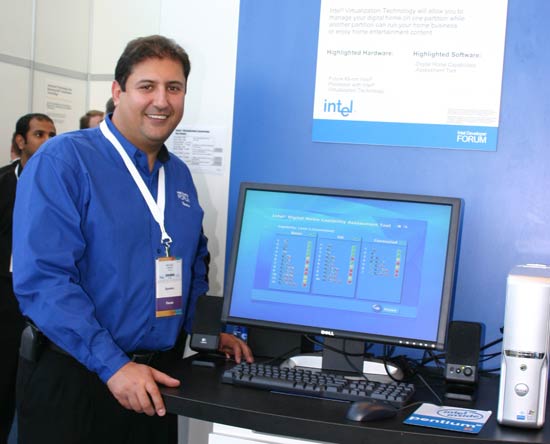
The benchmarking tool runs these tasks one at a time as well as in parallel, and generates a performance rating based on things like the number of frames dropped while watching a HD video stream.
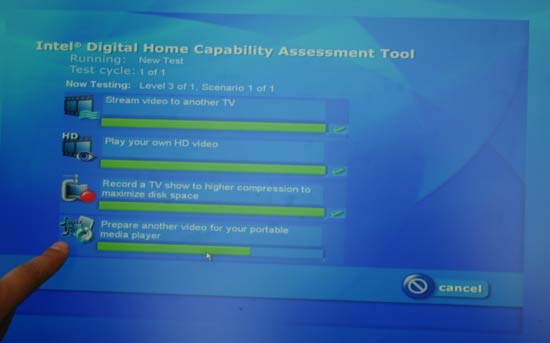
The idea is to be able to quantify the digital home experience a particular platform would offer, thus allowing end users to better compare systems based on overall experience. Honestly, the whole thing sounds a lot like AMD's True Performance Initiative that resulted in the model numbers we've come to live with for so long; it also sounds a lot like Intel's iComp ratings from years past.
The difference between this tool and previous attempts to characterize performance is that Intel's tool doesn't just output a performance rating, it also gives you a detailed list of what tasks the tested PC can do poorly, relatively well and perfectly:
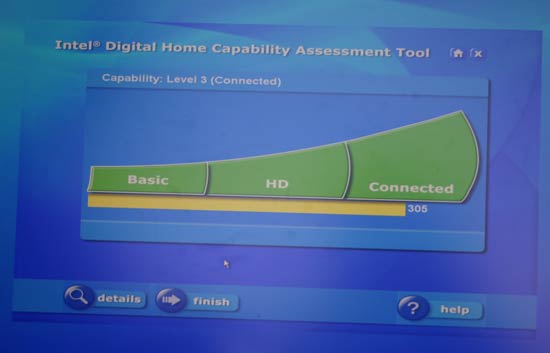
The overall performance rating
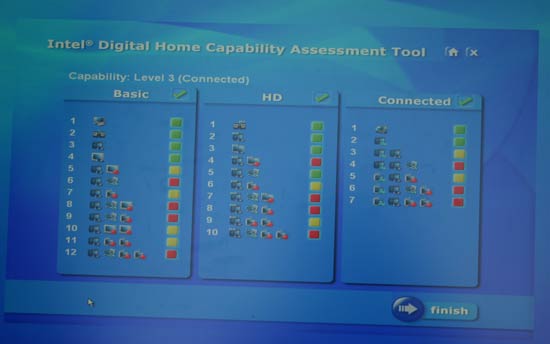
The breakdown of what this system can and cannot do
The rating system is an interesting idea and Intel promises that it will be made extensible to include other usage patterns as they emerge.
Obviously Intel's tool isn't something we'd use here on AnandTech, but it is interesting to note that you may end up seeing the results of this tool in stores like Best Buy and by companies like Dell to help characterize the relative performance of their systems as far as a digital home user is concerned.
The tasks the tool performs are using regular, unmodified applications, so in theory they shouldn't deliberately penalize non-Intel processors, but we'd honestly be very surprised if Intel had put together a benchmark that they didn't win.
Intel's other benchmarking program was a similar experience-oriented performance tool for games, very similar to FRAPS with a few tweaks. The tool measures instantaneous frame rate over time, but then it compares those frame rates to user data expressing the quality of their gaming experience with reference to the frame rates and produces an experience rating.
The idea of the experience rating sounds interesting, but we can't help but believe that this tool wouldn't have been created had Intel not been so far behind on gaming performance.
Intel is planning on making all of these types of tools available to the public and making them somewhat transparent, hopefully showing consumers what these benchmarks actually do to generate their results. Again, these aren't things we'd use here, but they are things that may end up in a retail store near you.



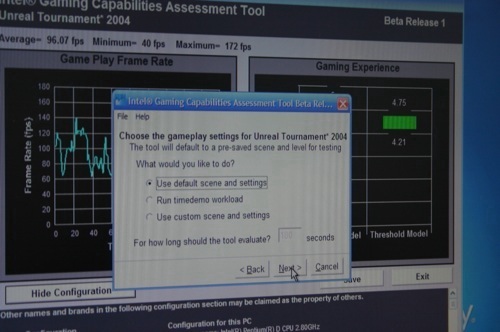
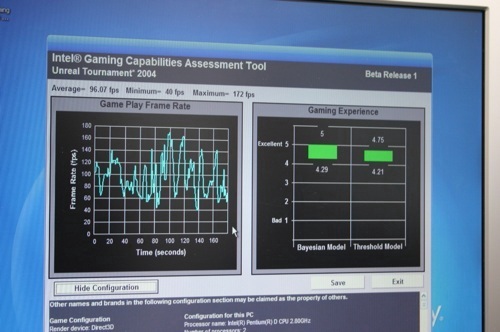








14 Comments
View All Comments
jediknight - Wednesday, August 24, 2005 - link
What encryption algorithm does the Seagate drive use? And is it firmware-upgradeable?smn198 - Thursday, August 25, 2005 - link
I'd like moredetails on this. If you've got an OS installed and no key yet, could you then add a key and have it re-encrypt the data or would you need to pull the disk out and do this from another system? Shame Seagate won't ship software. Is there anything free?missleman - Wednesday, August 24, 2005 - link
BONZI BUDDY?!?!?! WTF? I cant beleive intel was stupid enough to install that on their computers.JarredWalton - Wednesday, August 24, 2005 - link
Maybe it was a demonstration of malware getting installed on one virtual OS, and then another OS could detect it and remove it? I know Intel has talked about using virtualization for virus-related stuff before, so it's not too much of a stretch.Hacp - Wednesday, August 24, 2005 - link
Also nice to see the Xbox360... I'm not gonna buy one.xsilver - Wednesday, August 24, 2005 - link
is amd moving to ddr2 and then m2 sockets in a 2 stage process?if so that's pretty evil -- makes users upgrade twice
JarredWalton - Wednesday, August 24, 2005 - link
No, M2 is DDR2 for desktops. S1 is DDR2 for the mobile sectore. F is for the server/workstation market. All are DDR2-only solutions, and there will be no DDR2 support without a socket transition.IamTHEsnake - Wednesday, August 24, 2005 - link
Mitosis looks promising indeed.It's technologies like this that intrigue me. This is more of what Intel should focus on, not just the brute computational strength of mhz or pipeline stages.
I am also looking forward to hearing more about die-stacking and DRAM-on-die.
Furen - Wednesday, August 24, 2005 - link
Yes, mitosis sounds nice indeed (though I'd expect it to be worthless on tasks like gaming), hopefully the software overhead wont be too bad by the time we start seeing it.phaxmohdem - Wednesday, August 24, 2005 - link
One has to wonder in Re: to Mitosis...They say that it is just started in Research and Development, and that we may not see if for 5-10 years..... By then wouldn't all apps be written to take advantage of multithreading? Thus rendering Mitosis a day late and a dollar short?